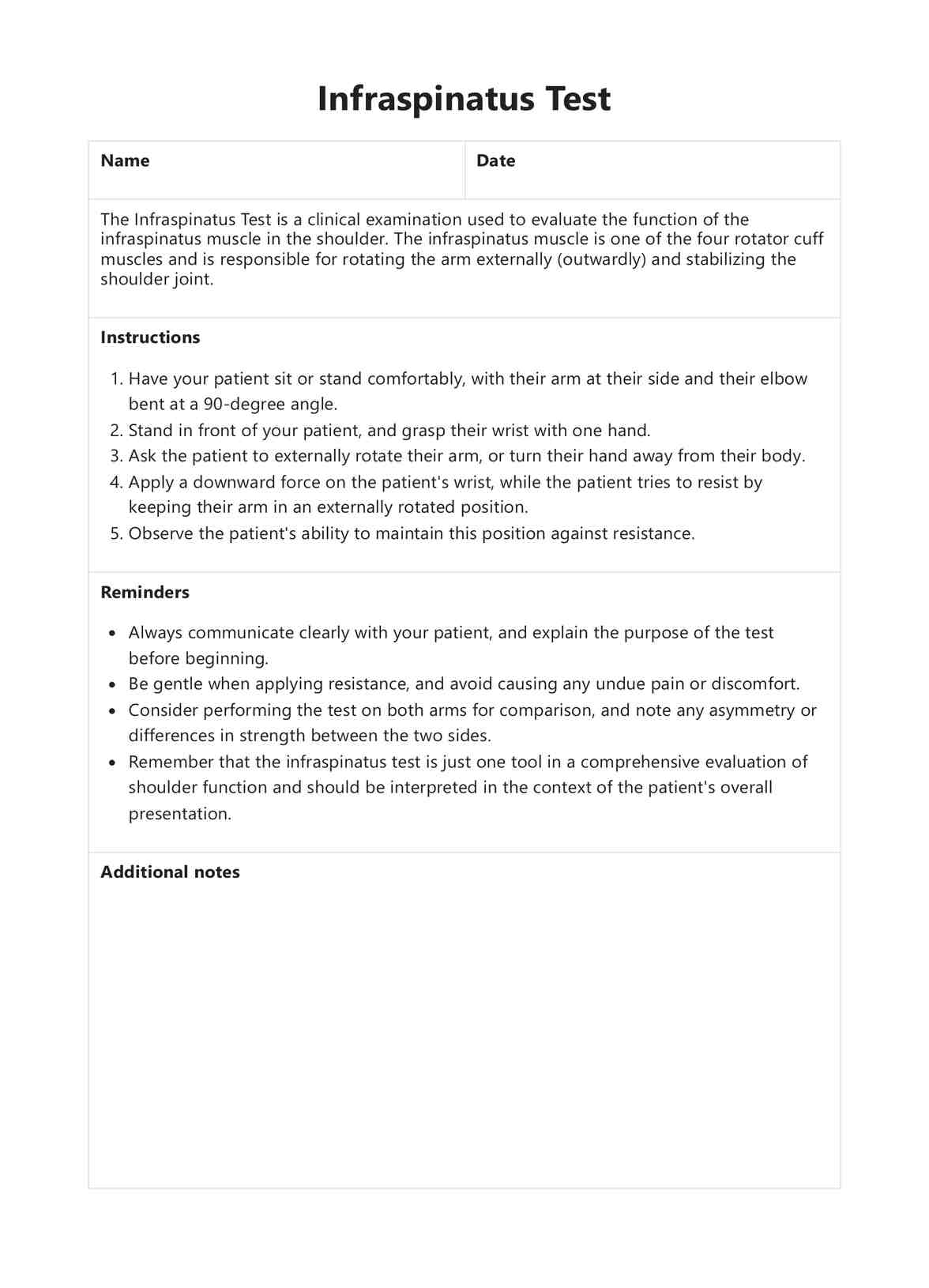This test doesn't have a scoring system. Instead, it's used to assess a patient's shoulder condition. For example, if the patient reports pain or difficulty during the test, that could indicate an injury.

Infraspinatus Test
Learn about the Infraspinatus Test, a physical examination for shoulder injuries. Get access to a free template to assess your patient's shoulder accurately.
Infraspinatus Test Template
Commonly asked questions
The Infraspinatus Test is a great way to evaluate shoulder conditions and detect potential injuries early. This helps you catch problems before they become too severe and can help you create a treatment plan.
The Infraspinatus Test measures the strength of your patient's shoulder muscles, specifically the infraspinatus muscle. By testing this muscle, you can determine the overall condition of your patient's shoulder and detect any potential injuries.
EHR and practice management software
Get started for free
*No credit card required
Free
$0/usd
Unlimited clients
Telehealth
1GB of storage
Client portal text
Automated billing and online payments











